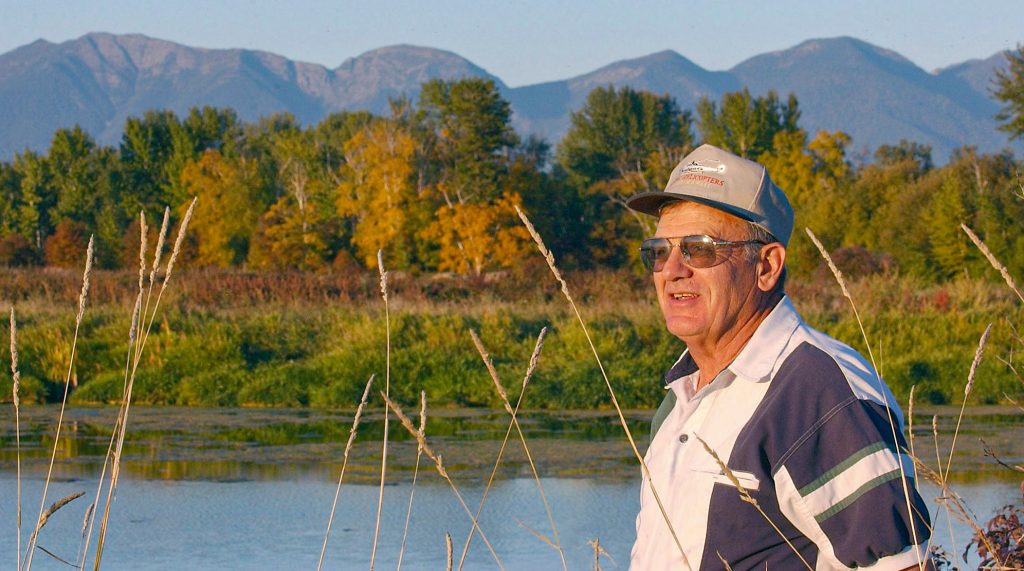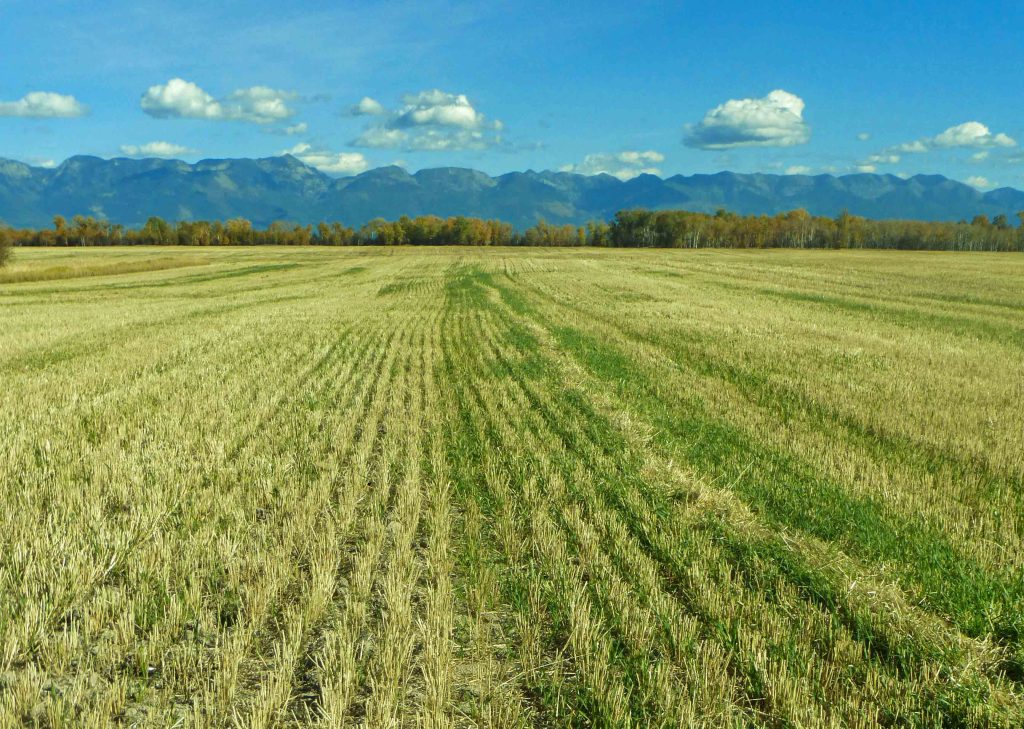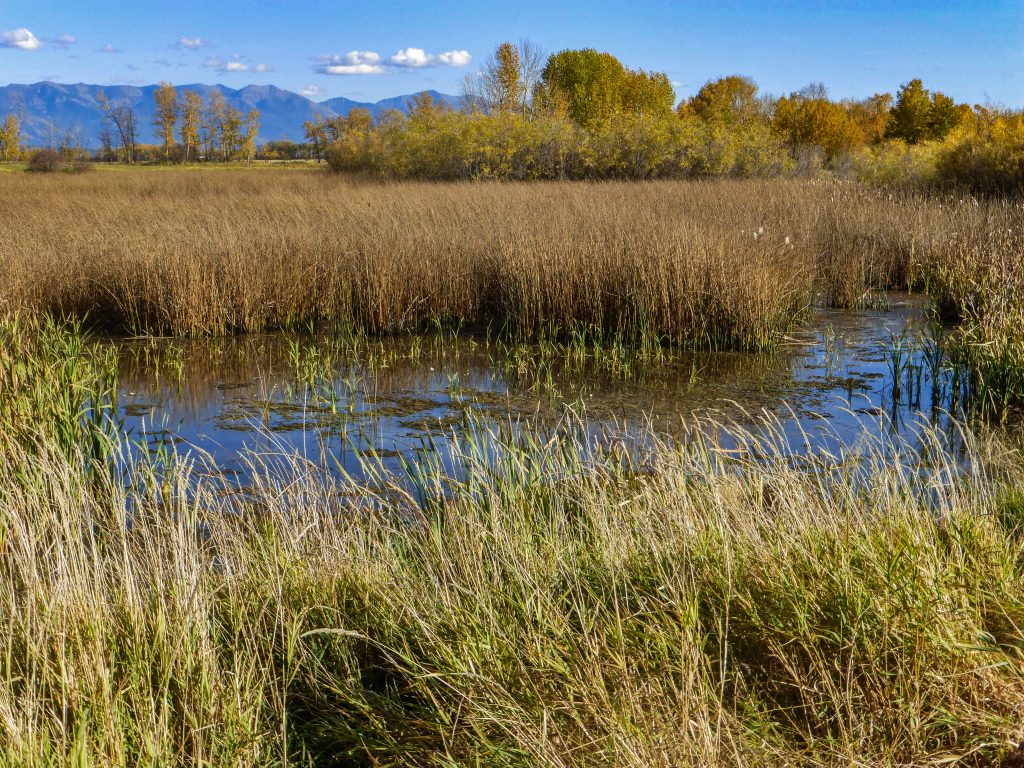Sanders Easement
Saving Farmland for the Next Generation
The Sanders family has been farming and enjoying the open beauty of the lower Flathead Valley for over four generations. Ray Sanders lived on his farm near Wiley Slough since he was three years old, working some of the most productive soils in the Flathead Valley. At the same time, he and his family built a deep appreciation of their large, open expanse of farmland in the Lower Valley and how important this land is to wildlife and water. Ray enjoyed the peaceful, extraordinary setting of his land and was proud that his son-in-law and daughter, who live next door, decided to take up farming.
Ray saw a lot of change is his 70 or so years in the Flathead. The continual loss of farmland and open space was hard to ignore and was concerning to him.

Photo above: Ray Sanders on his conserved property, photo by Karen Nichols

So, he and his wife, Darlene, decided to do something about it. In 2004, they placed 307 acres of their farm in a conservation easement with Flathead Land Trust, forever keeping the land intact. “We chose to place part of our farm into a conservation easement because we feel it is a way to save the Valley from being totally consumed by housing developments,” said Ray.
Why does this protection matter? Over half of the Sanders farm has some of the most productive soils in the nation and the crops produced on these soils do well even during droughts. This is because most of the land is sub-irrigated by waters of the Flathead River and the depth to groundwater is quite shallow. So the Sanders farm not only produces food for us – it also protects our water quality, the Flathead River, and Flathead Lake. The same shallow aquifer that keeps the soils moist during drought years for agricultural crops is quite vulnerable to development. If the lands over the shallow aquifer are paved or developed for commercial use or high density housing, the groundwater can be polluted.
Photo above: Agricultural field on the Sanders Conservation Easement
This groundwater can travel into Flathead River and flow down to Flathead Lake, one of the cleanest, largest freshwater lakes in the world.
The agriculturally productive land also provides important fish and wildlife habitat as it borders 1.4 miles of Wiley Slough and Ashley Creek and includes 47 acres of wetlands. This habitat is especially important to waterfowl, migratory birds, small mammals, reptiles, and amphibians. Deer, turkeys, pheasants, eagles, and occasional black bears also live on or visit the property.
After Ray passed away in 2016, his daughter and her husband continued his legacy and now manage the farm. As Ray pointed out – “Land is no longer being made. If it is at all feasible to protect your land through a conservation easement, I would highly recommend it as a way to preserve the land for wildlife, birds, and families for generations to come.”

Photo above: Protected wetland on the Sanders property
